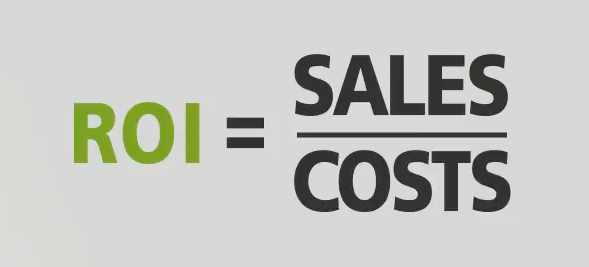Want In-Depth PPC Training?
Visit the ParaCore AcademyPay-per-click (PPC) advertising is a crucial component of digital marketing strategies. To effectively measure the success of PPC campaigns, it is essential to calculate PPC ROI. Calculating PPC ROI serves as a key performance indicator for assessing the effectiveness of pay-per-click advertising by comparing net profits against total costs associated with PPC campaigns. This understanding helps businesses optimize their advertising efforts by focusing on revenue and expenses.
Evaluating campaign performance about metrics such as ROAS (Return on Advertising Spend) is also important. This helps businesses assess individual ad channels and make informed decisions about budget allocation to optimize their advertising strategies.
Timestamps:
[0:49] Calculating ROI
[1:28] Calculating Return on Ad Spend
[2:40] A Closer Look at Your Return
[3:34] A Closer Look at Your Investment
Transcript:
Are you wondering how to determine if your PPC campaign is profitable? The key is understanding how to calculate your Return on Investment and Return on Ad Spend.
But don’t worry; you don’t have to be a mathematician to figure it out. The more you understand the financial metrics involved, the better you’ll understand your campaign, what’s working and what isn’t.
I’m Adam Arkfeld, owner of ParaCore, a pay-per-click lead generation agency.
Do you want to know if your ad spend is profitable, but you’re not sure where to start? There are usually a lot of questions to answer when you’re trying to determine the success of your PPC campaign.
Questions like:
- What costs should you consider in addition to ad spend?
- What metrics do you need for the calculation?
- Is your website set up with the necessary tracking codes?
In this video, I’ll be answering these common questions and more so you can easily, and accurately calculate your PPC profit.
Understanding PPC ROI
PPC ROI (Return on Investment) is a crucial metric for measuring the effectiveness of pay-per-click advertising campaigns. It helps businesses understand the revenue generated from their PPC campaigns relative to the costs incurred. A positive PPC ROI indicates that the campaign is profitable, while a negative ROI suggests that the campaign is not generating enough revenue to cover its costs.
Understanding PPC ROI is essential for businesses to determine the effectiveness of their PPC campaigns and make informed decisions about their advertising spend. By tracking PPC ROI, businesses can identify areas for improvement, optimize their campaigns, and maximize their return on investment. This metric provides a clear picture of how well your PPC campaigns are performing and whether they are contributing to your overall business goals.

[0:49] Calculating ROI
First, what is ROI? ROI stands for Return On Investment. Your return is the income or your sales as a result of your advertising.
Your investment is the costs associated with getting that income. If you sell products online, the sales number is the revenue you received from those purchases.
If you provide consulting services, then sales are the fees you collect for consulting.
Costs included in the Investment piece can change depending on your needs and the structure of your organization, but they generally include the ad spend and other costs associated with your advertising.
ROI is simply your return, or money you’ve made, divided by your investment, or advertising costs. The result is shown as a percentage.

PPC ROI Formula
The PPC ROI formula is a simple and effective way to calculate the return on investment of a PPC campaign. By using this formula, businesses can quickly and easily determine the profitability of their PPC campaigns and make informed decisions about their advertising spend. This straightforward approach allows PPC marketers to assess the success of their campaigns and adjust their strategies accordingly to maximize their return on investment.
[1:28] Calculating Return on Ad Spend
Now, when many people want to know how to calculate ROI, what they’re actually referring to is return on ad spend. So you’ll need to decide if you’re calculating return on ad spend or return on investment.
For simplicity, return on ad spend is easier. If you have more costs in your PPC campaign, like an agency or 3rd party tools, ROI might be better in understanding your overall return.
Return on ad spend is calculated by dividing your sales, as a result of PPC advertising, by your ad spend. The result is also shown as a percentage.
The difference between ROI and return on ad spend is whether you’re accounting for your company’s cost of doing business related to your PPC advertising.
Return on ad spend answers the question “did we make more money in revenue than we spent on advertising?” It doesn’t give you the full profitability picture because ad spend isn’t the only cost of a PPC campaign.
To really get an idea of the cost of advertising, you’ll need to factor in all the costs, not just ad spend.
To calculate any of these equations, it’s essential that tracking is set up correctly. Some metrics require tracking codes while others are already in your account.
As a rule of thumb, conversions are the metrics you normally need to set up outside of your PPC advertising. The costs are always there for you in your ad account when you need them.
Factors Affecting PPC ROI
Several factors can affect PPC ROI, including:
- Ad spend: The amount spent on PPC ads can significantly impact PPC ROI. While higher ad spend can lead to higher revenue, it can also increase costs and reduce ROI if not managed properly.
- Conversion rate: The conversion rate of a PPC campaign is crucial. A higher conversion rate means more of your clicks are turning into sales, leading to higher revenue and a better ROI.
- Cost per click (CPC): The cost per click of a PPC campaign can also impact PPC ROI. A higher CPC increases your costs, which can reduce your ROI if the revenue generated does not proportionally increase.
- Revenue per conversion: The revenue per conversion is another critical factor. Higher revenue per conversion can lead to higher overall revenue and a better ROI, making it essential to target high-value customers.
By understanding and optimizing these factors, businesses can improve their PPC ROI and ensure their paid campaigns are as effective and profitable as possible.

[2:40] A Closer Look at Your Return
Let’s take a closer look at your return. In e-commerce, return is generally just the sale you received online. It’s a one-time purchase and your ad spend, in order to get that sale, needs to be lower than the sale price.
In B2B, it might be your average project cost. If you sell consulting services and they average $5,000 per client, then you might assume your return is $5,000 per client.
Similar to e-commerce, you’ll want your costs to be much lower than this $5,000 number because it’s a one-time purchase. If, on the other hand, you have a recurring service, you’re in a stronger position and the return can be much higher than it initially seems.
With recurring services, you need to calculate the average lifetime value of your customer. That value is calculated by multiplying the average revenue per month by the average number of months your clients stay with you.
For example, if your average monthly revenue is $500 for a client and they stay with you for an average of 18 months, then the lifetime value of that customer is $9,000. You’d use this $9,000 number when calculating ROI.

[3:34] A Closer Look at Your Investment
What are some things you need to understand about your investment, also known as your costs?
First, remember your investment is all your costs and your return is how much money you’re making as a result of that investment.
At a minimum, you need ad spend in your “investment” bucket, but you may want to include other costs associated with your PPC marketing such as: the cost of any third party services like:
- Unbounce, CallRail, or bid management tools
- The cost of reporting tools you’re using
- The cost of additional staff that are running PPC in your department or the cost of a 3rd party agency running your ads
- Any of your costs that are needed to run your PPC advertising should be included in the investment portion
Let’s go over an example and start by just looking at return on ad spend. Let’s say you have a lead generation website that sells leads to attorneys. You want to know your return on ad spend over the past 30 days.
You check out AdWords and see that you spent seventeen thousand, five hundred forty seven dollars ($17,547) on your AdWords campaigns which brought in four hundred and eighty nine (489) leads.
Three hundred seventy five (375) of those leads were sold to attorneys for an average of one hundred and thirty dollars ($130) per lead.
Multiplying three hundred and seventy five (375) by one hundred and thirty dollars ($130) shows a return of forty eight thousand seven hundred and fifty dollars ($48,750).
You divide that return by your ad spend and get a return on ad spend of two hundred and seventy eight percent (278%).
That means for every dollar spent on advertising, you made $2.78.
This is a great starting metric, but you might want to get deeper into the numbers and look at a more comprehensive return on investment.
In the same scenario, you might have an agency running your ads and they cost three thousand dollars ($3,000) per month in management fees.
You also have software costs that total an additional six hundred dolalrs ($600) per month.
Now, your investment is your ad spend of seventeen thousand five hundred forty seven dollars ($17,547) plus thirty six hundred dollars ($3,600) in additional costs totaling twenty one thousand one hundred forty seven dollars ($21,147)
Using the same equation, return divided by investment, we now get an ROI of two hundred thirty one percent (231%).
The ROI looks like it decreased by 47%, but nothing changed on the income side. You’re just increasing the number of expenses used for your calculation. If you’re reporting to management or someone else, make sure they know how you’re calculating the ROI so everyone’s expectations are consistent.
As you can see, there are various factors to consider when calculating your ROI. Once you have a good handle on it, you can focus on adjusting your ad campaign to meet targets and track your performance over time.
If you have any questions, leave a comment below and don’t forget to subscribe to the channel. We’ll be publishing a lot more videos just like this for marketers just like you.
Related Posts
- A Business Guide to Google Ads Auto-Tagging: Tracking Made Easy!
- How to Use AdWords Negative Keyword Lists
- AdWords Demographics – Education, Children, Marriage, & Homeownership
- Google Ads Promotion Extension
- 🎁🎄 Holiday Ad Spend Strategy
- Is Facebook Ads or Google AdWords Right for You?
- AdWords: Is 3rd Position Better Than 1st?
- What are Single Keyword Ad Groups? (SKAGs)
- Optimizing AdWords Shopping Campaigns
- AdWords RLSA Tactic
- Google AdWords Notes are Here!
- AdWords Script for Negative Keyword List Conflicts
- Ensure Your AdWords Search Traffic is CLEAN
- Hitting Budget in AdWords? Try These Optimization Tips
- Capitalize on Local Service Ads that are 80% Cheaper than AdWords Leads
- Spot Underperforming Products in AdWords PLA Products
- How to Diagnose a Google Ads Campaign Not Hitting Budget
- 5 Ways to Social Proof Your PPC Campaign
- Do These 6 Things to Ensure Your PPC Campaign is Set Up Correctly
- Demographic Targeting in AdWords Search Ads
Want In-Depth PPC Training?
Visit the ParaCore AcademyNext Video
Call Tracking Got You Down?Next Video



